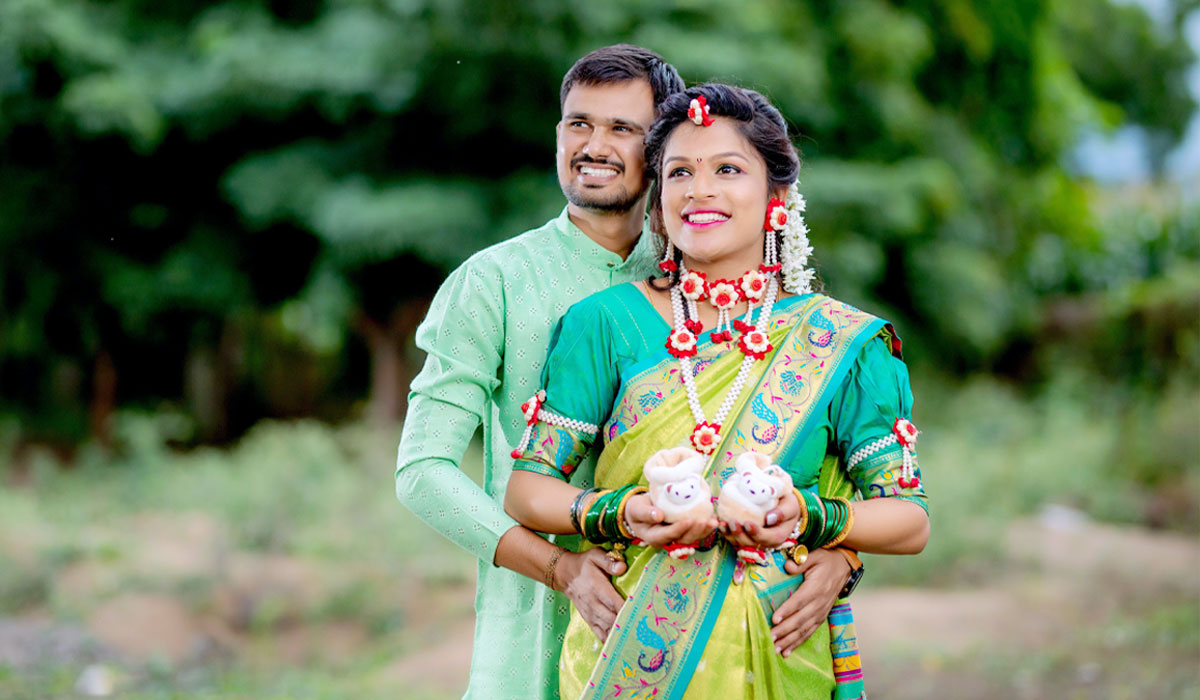The Navratri puja and rituals are an integral part of these celebrations. As the Navratri festival gets closer, people start preparing for this holy festival. Markets are decorated with goddess Durga idols, Chunri, goddess Durga prayer books, photos and banners and other puja materials.
Navratri Preparation
Pooja Room Decorartion
The home is well-cleaned. The temple on the home is refurbished and decorated with LED lights and a bulb. The idols of the goddess Durga are placed in the centre.
Kalash Sthapna
And Kalas Sthapna is done by the main priest in every home.
Navratri Puja and Rituals
Navratri puja includes a series of significant practices during nine divine nights. It offers a comprehensive spiritual experience that brings people closer to the goddess and strengthens their faith.
It begins with the installation of a Kalash, a consecrated water-filled pot, symbolizing the presence of Goddess Durga. Devotees recite the Durga Saptasati, which recounts her valorous battles against demons, seeking her blessings for protection and strength. Fasting during the day, with a focus on consuming vegetarian food, is a common aspect. The puja includes the daily performance of aartis (prayers), floral offerings, and lighting of lamps, fostering a deep connection with the divine.
Navratri Mantra
Navratri’s mantra is associated with the principle of purification. These Mantra include those included in the text ‘Durga Saptashati’. However, the quantum of effects depends on the level of sincerity with which the mantra is recited. During Navratri, devotees repeat the universal Navratri mantra for the invocation of Maa Durga, which is-
‘Aim hreem kleem chamundaye vichche’
Each mantra follows a pattern of rhythm, as in the number of syllables to create a certain effect. Hence the powerful Navratri mantra has to be recited with the right intonation and with full reverence.
The festival’s rituals typically involve the installation of the sacred Kalash, recitation of the Durga Saptasati, fasting, dance (Garba and Dandiya), and daily aarti to honour the Goddess. These customs are observed with fervour, uniting devotees in prayer, dance, and song, creating an atmosphere of spirituality, joy, and unity.
Navratri Colours
Each year, we get a different set of colours to be followed for each day in Navratri. Devotees not only wear those coloured dresses for that day but also decorate the idol of the Goddess in that particular colour. The devotees offer a particular coloured Saree to the Goddess each day. Each colour has a significance of its own and represents different forms of the Goddess. In Maharashtra and Gujarat girls and ladies and even some enthusiastic men follow the colours by wearing a Saree or dress of the colour of the day. Checkout:- Nine Colours of Navratri.
Navratri Celebration
Navratri is a major festival in the western states of India: Gujarat, Maharashtra, and Karnataka during which the traditional dance of Gujarat called “Garba” is widely performed. Navratri is celebrated with great zeal in North India as well including Bihar, West Bengal, Madhya Pradesh and the northern state of Punjab.
Additionally, vibrant folk dances like Garba and Dandiya are integral to the festivities, where people come together to celebrate the divine feminine and foster a sense of community and devotion.
Conclusion
Navratri puja and rituals are not merely a series of religious practices but a vibrant expression of devotion, culture, and community. The nine nights of Navratri offer a sacred opportunity to connect with the divine, celebrate the victory of good, and promote spiritual growth. The festival’s rituals, from the elaborate Kalash installation to the rhythmic Garba dances, serve as a collective celebration of faith, unity, and tradition. Navratri transcends religious boundaries, embracing people from various backgrounds who come together to rejoice in the enduring spirit of positivity and devotion. It is a beautiful reflection of the rich tapestry of Indian culture and the enduring power of the human spirit.
The special prayer is organized from the day first of Navratri morning and continued in the evening and morning till the 9th day. During these days the family member keeps fasting, praying and meditating to do jap of mantra from Durga Saptashati.



